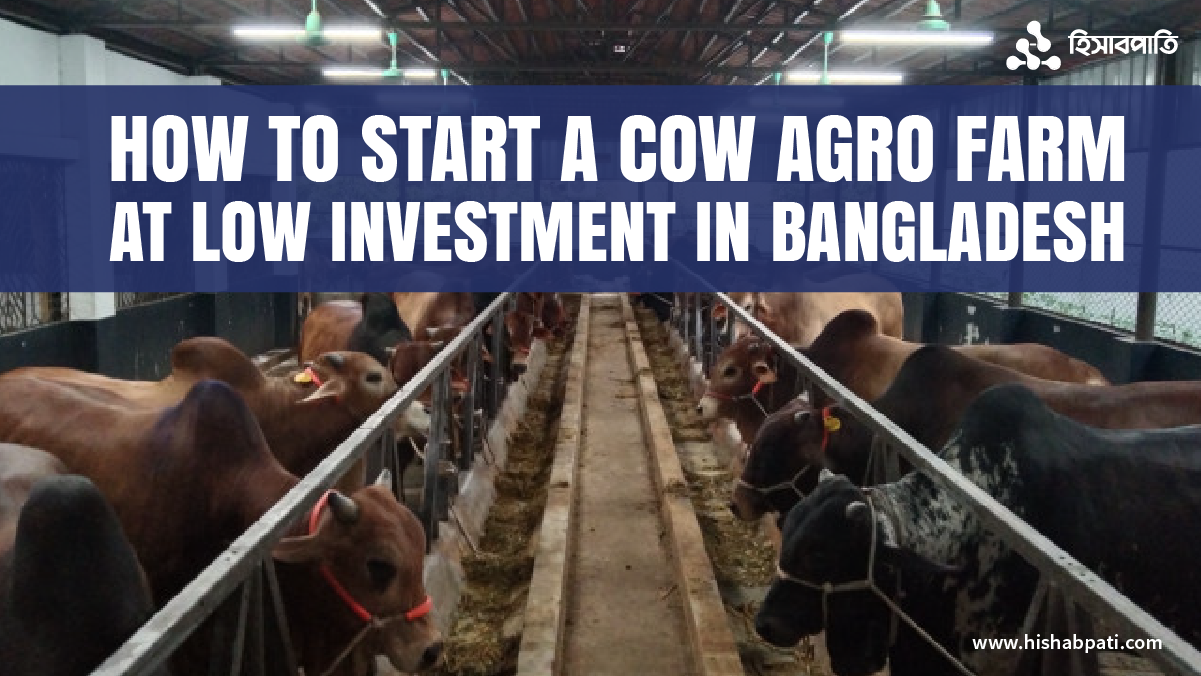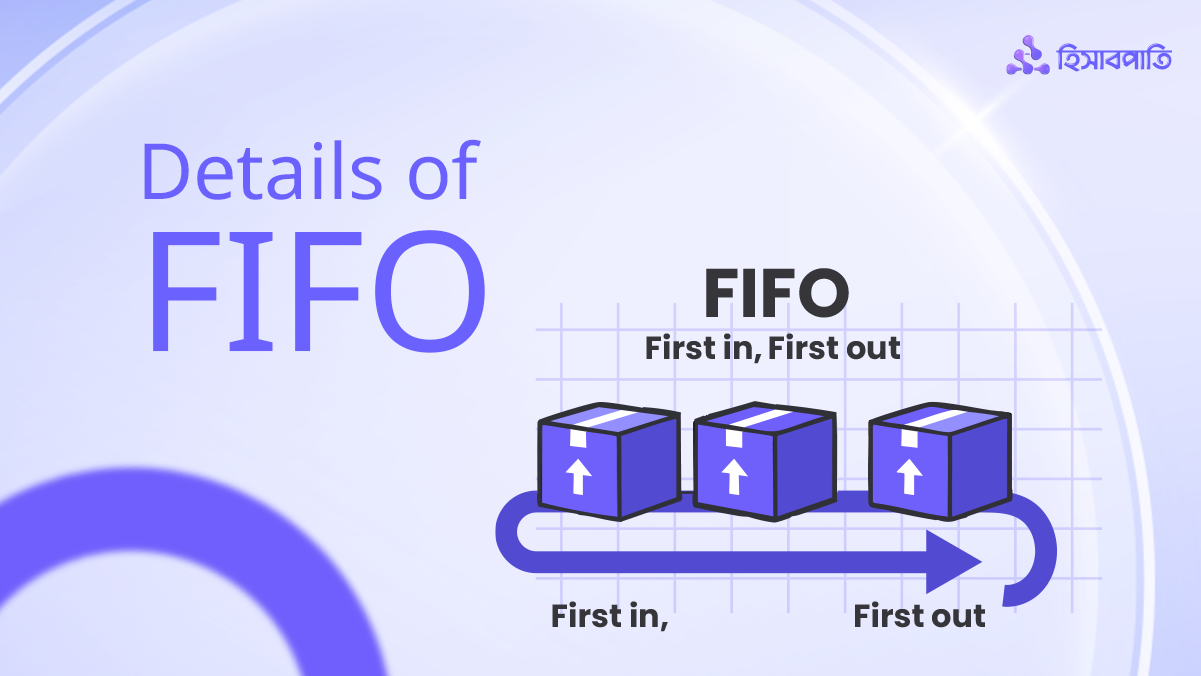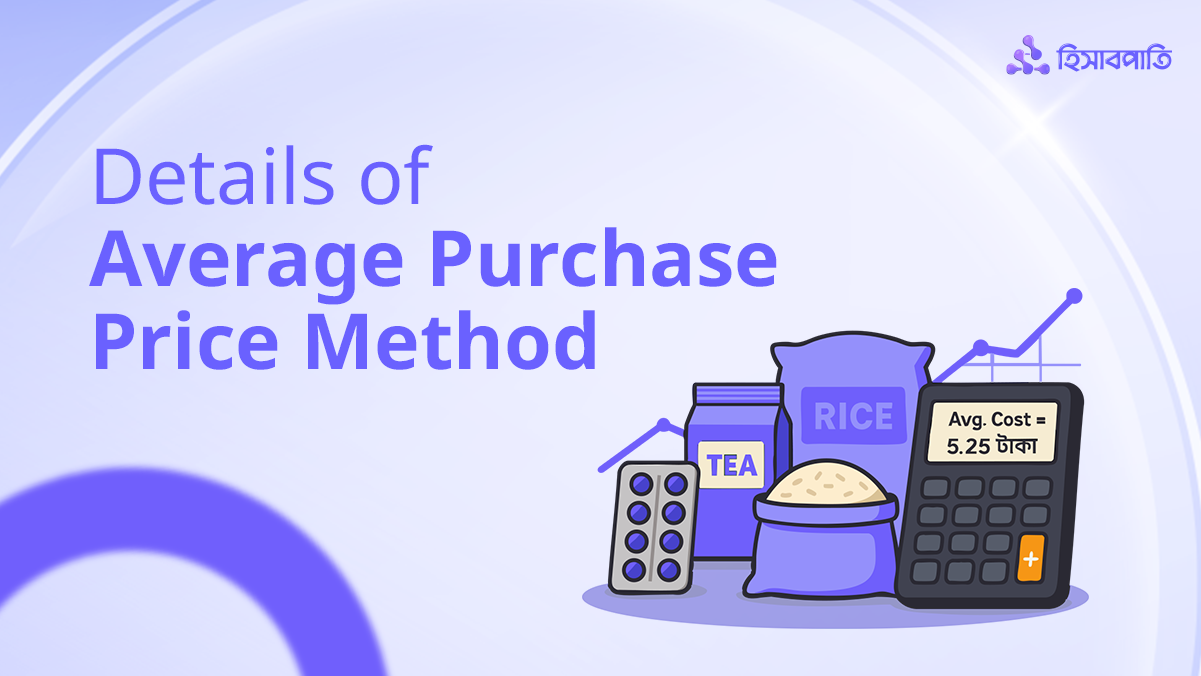Being financially independent will always give you a different pleasure. Whether you are doing any job, running a grocery store, clothing store, poultry farm, or even a cow agro farm.
Are you thinking of starting a cow agro farm and your investment is low? If yes, you are going to love this article because here we’ll discuss how to start a cow agro farm in Bangladesh at a low investment.
Is Cow Farming Profitable in Bangladesh?
Bangladesh has around 15,00,000 cow farms across the country. According to the Department of Livestock Service’s direct-general Abdul Jabbar Sikder on 10th January 2021, of these farms, only 6 were of a large scale.
Our deshi breeds of cows are low in yield and give around 2 to 5 liters of milk each day. If you can develop new breeds of cows, they will be able to offer even 14 to 15 liters of milk each day. Research says that the weaning rate is estimated at 85 percent means that you can expect that a calf can be weaned and sold from the cow’s 85 percent. Depending on these assumptions and after making adjustments for this weaning rate, calf revenue on average is around BDT 57,797.
The farmers get the total amount of food for their cows at a quite high rate. So, the production returns on cow farming in Bangladesh are not extremely profitable. Still, the domestic milk price is quite high in this country which makes cow farming on average profitable.
Again, the annual demand for meat (including cattle and poultry) consumption in Bangladesh is 7.3 million tons. Bangladesh even exports the surplus of its production. According to Bangladesh Meat Trade Association’s President Farid Ahmed, Bangladesh can earn BDT 60,000 to BDT 70,000 crore each year by exporting bones, meat, entrails, leather, and horns abroad if cattle are reared well and the products are processed in the right manner.
So, as a whole, you can call cow farming in Bangladesh profitable.
How to Start Cow Agro Business in Bangladesh: Step by Step Guide
No matter whatever business you are going to perform in Bangladesh or any other country you need to know these basic things for sure:
- What do you exactly want to do?
- How you are going to do it? and
- Let’s have a look at the following discussion to get an idea of how to go ahead with your dream of starting a cow agro-business in this country.
1. Business Plan:
You may think that starting a dairy farm won’t require that type of business planning. But the reality is something different because whatever business you are going to do, you need to have a business plan. This plan will serve you as a road map that you can follow and also present to investors if you require any funding help.
The business plan needs to consist of the below-mentioned sections:
Company Overview- It will inform your cow agro farm’s history and what kind of cow agro farm you run. For instance, is your farm calf cattle, dairy, or beef farm?
Executive Summary- It will give a summary of your whole business plan so anyone reading this can easily understand your cattle farm’s main details.
Industry/Market Analysis- Here, you need to keep the main information regarding the cow agro-industry. Perform market research. Then note down the size of the industry, the current trends that can affect the industry, strengths, weaknesses, opportunities, and threats of this industry.
Customer/Consumer Analysis- You will figure out here who will be your target or ideal customers, and keep all the relevant information about your target or ideal customers, and also their demographics. For instance, what’s their age? Where are their living places? What’s important to them while buying such products that you are going to offer?
Competitor Analysis- You are going to note down your indirect and direct competitors here and the way you will develop a competitive advantage.
Marketing Plan- In the marketing plan you need to address the following 4Ps:
Ø Product- Decide and include what services/products you are going to offer.
Ø Price- Note down the prices of your services/products.
Ø Place- It will inform your business location and also the way it will help your business to enhance sales.
Ø Promotions- You will document the promotional methods you will apply to draw consumers to your cow agro farm. For instance, you can like to apply public relations, leaflets, social media marketing, search engine optimization, pay-per-click ads, and the like.
Management Team- This part will contain your farm’s management team’s background.
Operational Plan- You will decide here, your main required processes to operate daily operations. If you need any staff, you will also note it down here. Most importantly, you will develop an expected growth timeline displaying your desired milestones in the future.
Financial Plan- Last but not least, your financial plan will answer the following questions:
Ø What will be your incurred startup costs?
Ø How will the farm generate money?
Ø What will be the projected expenses and sales for the coming five years?
Ø Do you require raising funds to start your business?
2. Choose Your Cattle Farm’s Name:
Choose a suitable name for your business that is memorable and meaningful. Consider following these tips:
- Available- Check out whether the name you like is available or not i.e. check the name against the list of registered names of businesses in your state. It means checking whether anyone has already used the name.
- Simple- Keep the name simple. Generally, the most appropriate names are simple to pronounce, spell, and remember.
- Marketing Theme Choose a name that represents your business or the cattle farm.
3. Have a Thorough Market Research:
Market research is quite a lengthy process that requires a lot of effort. Many companies are available on the market that can do this research work on your behalf. It will cost you some money but can accelerate your business starting process.
You also have the option to do it yourself. Doing it will help you understand the process from the root level.
Ask yourself what your product will be. Is it going to be cattle meat or milk? After settling your product, search your focused market and your targeted buyers. Perform a SWOT (strengths, weaknesses, opportunities, and threats) analysis of your business concept.
Let’s make it easier for you. Suppose your product is milk but your area doesn’t have enough dairy industry or local demand. This situation will create the hassle of transporting it to other places, thus making your cost increase.
Again, when it comes to beef, there is always some local demand. Except for some religious reasons, some people don’t have beef, but that’s quite rare.
While milk production is also a year-round business if the market demand is there.
4. Know The Challenges You Will Face
We have already discussed the profit and potential, but knowing more about the challenges is also vital. Because when you know about the problems, you will be prepared enough to tackle them. Thus, your cow farm will become more sustainable. Common issues that you will probably face are-
- Sudden price hike of cow foods
- Unstable economic conditions after the pandemic
- Changing market situation of supply and demand
- Inflation
- Cattle health issues and diseases
- Extreme weather conditions and calamities
- Reduced price of cattle, especially on different occasions
- Unwanted situations like war, political unrest, etc.
5. Make Your Budget Thoroughly
You always need to keep the budget in your mind. Because the budget is the main fuel for a business whether it is service or product based. Starting any business requires initial capital. But this is not the end. You will have to bear a lot more cost than that of your initial capital. Affording a day-to-day cost needs plenty of money.
Now you can ask what’s the budget. It’s really tough to answer because it’ll depend on you. 10 lacs taka is a good amount for starting a small cow farm. It’s also possible to start with less amount. What are those costs and where will your budget be spent?
- Building house for cattle
- Buying the cattle
- Cow food cost
- Food and water feeding accessories
- Veterinarian fees for regular check-ups
- Vaccines and medicines cost
- Pasturing land cost
There will be some other small costs for you like an electricity bill if it’s there. A cow weighing around 200 kg can consume the feed that is worth 6000-7000 taka. While budgeting, make sure that you are counting all kinds of costs even if they are a few pennies. And keep the money inflation in mind as the global economy is rapidly changing due to the pandemic, and other unwanted situations such as war, political unrest, and the like.
6. Sourcing The Budget
You might have some savings of your own. If it’s not enough then how will you get your capital? This is probably the first thing that comes into mind while starting a business especially if you are lacking in monetary issues. In that case, you might need a loan.
Banks can be good sources of loans but they charge a high-interest rate. They have also less flexibility towards the debtors. So, you need to try to collect loans from your friends and family, NGOs, and local co-operative society. These options will be far better for a small entrepreneur than financial service providers like banks.
How to Take Bank Loans?
But if you can’t manage the budget from easy sources then you have to come under the shed of banks and financial institutions. You might be thinking about the difficult procedures of taking bank loans. Wait, don’t panic. Let’s discuss the basic documents you will need to take a bank loan-
- National ID Photocopy of both applicant and guarantors.
- 2 copies of a recent lab-printed passport size photograph
- 1 copy of a recent lab-printed passport size photograph of the guarantor
- Copy of recent Tax Return / Income Tax Clearance Certificate/ the Applicant’s Tax Acknowledgement Receipt (for loan amount exceeding Tk.5.00 lac)
- Bank statements of 6-12 months
- For job holders, a salary certificate from the authority
- For businessmen, valid trade license for the last two years and income statement.
For House / Flat Owner, Electric Bill / Gas Bill / Municipal Holding Tax Receipt/ Mutation Parcha/ Rent Receipt in the name of the applicant/spouse/parents.
7. Search for an Affordable Location
You can make a cow shed anywhere if you have the capital. But here, we are providing guidelines that how you can start a cow agro farm with low investment.
Lands and properties usually are very costly in urban and developed areas. Of course, these kinds of places are better as electricity, transportation and communication are easier.
But it’s not your cup of tea because you have a low investment. Try going to rural villages and different remote areas to find cheap places to build your cow shed.
If you can buy land, that will be great. But what if even the cheapest land is not meeting your budget? No worries! In the villages of Bangladesh, you can get some great land leasing offers and they are actually very much affordable.
Depending on the area, terms and conditions can be different but most of them are pretty buyer friendly.
You can save a lot of money by leasing land rather than buying one. It’ll enable you to spend more on other required fields.
At this point, my suggestion would be to lease land. To be honest you won’t be able to buy one with that small amount.
8. Choose Your Cow Agro Farm’s Legal Structure
Choose your farm’s legal structure whether it’s a sole proprietorship, LLC or Limited Liability Company, Partnership, and the like. All of these legal structures have their own terms and conditions. You need to study those well.
9. Register Your Cow Agro Farm Under NBR
You have to register your farm for tax at the Zonal Taxation Department, that’s under NBR or National Board of Revenue. You will get a TIN or Tax ID number for your business from there. It won’t cost you anything and take around four days.
10. Open Your Farm’s Bank Account
It’s crucial to get a business bank account in the name of your cattle farm. This is a simple process and consists of these steps:
- Find out and contact your desired bank.
- Collect and submit the needed documents (usually, consisting of your business’s Articles of Incorporation, NID or passport, or driving license, and address proof)
- Fill up the application form of the bank and give all required information.
- Consult a banker if you want to discuss the business needs and develop a good relationship with her/him.
11. Arrange the Needed Permits and Business Licenses
You will need some permits and licenses to operate a cow agro farm legally such as zoning permit, a business license, the animals’ health certificates, and a slaughterhouse operating license.
12. Lease or Purchase the Exact Cow Agro Farm Equipment
Your required equipment depends on your farm’s size, facilities, and cattle types. Some of the basic equipment can be water troughs, feed troughs, cattle prod, and fencing so that your cows wander here and there out of your property.
13. Build The Shed Accordingly
Making a good cow shed is important because your investment will grow in this place. A cow's house is often known as a shed. Before building the shed, you have to decide how many cows and which breed you are going to collect. Because different breeds require different amounts of space.
For example, the local Bangladeshi cow is not very big in size whereas some foreign breeds can be double or triple in size compared to a local one. Even the environment has to be suitable for cows. Otherwise, they won’t produce the expected result. If the temperature of your selected place is high or cold than required, you have to ensure that building materials help you to neutralize the environment. If the location is prone to natural disasters or any other kind of calamities, take every precautionary measure like stocking foods, and medicines. In Bangladesh floods and cyclones are quite common. Therefore, a house made with brick and cement sheets will be safe for cows. Especially, the foreign breed will require more care and a healthy environment. Though Bangladeshi breeds are habituated with our weather and do not need special care.
14. Select The Suitable Cattle Breed
Every breed has its own features, food habits, offspring, and, pros and cons. This part is a little bit tricky for you as there are a lot of breeds in Bangladesh.
Bangladesh has a good amount of cross-breed cows but their pedigree is tough to know. Because the farmers don’t keep pedigree records. But still, it’s possible for you to define their breed by observing cattle’s outlook and features.
If you don’t have a lot of investment but you have the knowledge, then you are good to go. Otherwise, a huge investment with little knowledge can spoil everything.
There are many local breeds including Pabna Cattle, North Bengal, Red Chittagong, Mirkadim, Sahiwal, Sindhi, Holstein Friesian Local Cross, etc. Basically, they are not that local, most of them are cross breeds
Start learning about local and international cow breeds. Some are good for meat production, while others are for milk. So, decide what your product will be on this cow farm.
If you start an agro-business without having the exact knowledge of the market of the selected product, your business will collapse in a short time.
15. Managing Ranching Fields
Providing the cows with some ranching fields will be quite a good addition to your farm. Pasturing is good for cattle health. Though it is not mandatory. There are many farms where cows are kept inside the farm for lifelong. You can grow some high-quality grasses, hays, and other food grains for the farm which can substantially reduce the food cost. Nowadays, a couple of grains can simultaneously be planted in one land. Try to learn those methods and techniques.
16. Turn Waste Management into Profits
While cows eat a lot, they also produce a good amount of waste. Cleaning is very important because of biosecurity.
In an agro farm, waste can be recycled and it can help to increase your profit. Cow waste is used for making various bio compost. It is quite useful for increasing soil fertility. Bio compost also has a huge demand in the market.
If used properly, it can be a profitable side business for you.
17. Regularly Consult a Veterinary
No matter how small your farm is, it’s precious to you because you’ve made an investment. So the motive will always be profit. Diseases in cattle farms are highly contagious and sometimes fatal too. Animals don’t show their symptoms at the beginning. When it’s visible, the damage is already done. Therefore a regular check-up by a veterinarian doctor is required. All the vaccines and medicines should be given to the cattle accordingly by discussing with expert veterinary. Take every precautionary measure to prevent diseases and maintain the highest biosecurity. In Bangladeshi villages, there are many people who provide treatment to cattle and poultry. They are not certified veterinary. They just somehow manage a crash course experience and start treating animals. It is very much common that mistreatment is killing household animals. Try to stay away from those inefficient people. Though they can solve some basic problems, there are always some risks while working with them.
18. Keep Your Income and Expenditure Updated
You have to keep all your income and cost on a daily basis. Those days have gone when we used to write down those account-related things. Things have changed. Some software are available now that you can use to track your accounts. HishabPati is an exceptional software that helps you keep track of your business’s expenses and income.
Demo - View this & start your journey with HishabPati in three simple steps!
- Step 1: Sign up on HishabPati
First, go to the HishabPati website and create an account for your business. Or, to make managing your business easier, download and install the ‘HishabPati’ app for free today.
Then complete the registration. The registration process in HishabPati is very easy and completely free!
- Step 2: Set up your company
After signing up, first set up your business profile by providing the necessary information as the owner. Then, set up essential business aspects such as inventory, units, purchases and sales, outstanding balances, invoices, and transactions. After that, start updating daily transactions.
- Step 3: Enjoy the various features of HishabPati
Once you start managing your business accounts with HishabPati, make sure to utilize the necessary and unique features, such as invoicing, barcode scanning, units, and expense management. To understand how to use HishabPati and its features in detail, watch demo videos in Bengali on YouTube.
Digital ledger for income and expenses – HishabPati demo.
HishabPati is a simple and affordable accounting app. Its subscription fees are divided into different durations and offered in budget-friendly packages. Learn more about the pricing and features of all HishabPati packages and choose the package that suits you best today! Best wishes for your business!
19. Ask for Local Experts' Advice If Needed
If you search, you will find many local agro farms in your area. All of them may not be large cattle farmers but still, they can help you with some knowledge and experience. If you find a local expert agro businessman, then it will be a blessing. In Bangladesh, most village people have cattle. Though the quantity of cattle is few, you can get a rough idea from them. Talk to a few families about their experience with cow rearing and milk production.
20. Ready to Start
Now, you are ready to start your cow farming. Just follow these mentioned steps and you can achieve your desired success.
21. Work Hard and Stay Hopeful
You don’t have huge money and resources. What you have is hard work and hope. Things don’t go always according to plan. Don’t get upset if things don’t go well. Be patient and work hard, success will come eventually.
Final Words
Starting a business can be difficult and overwhelming. When you are trying to start a cow agro farm, things are also the same and you can face many unknown difficulties. Most importantly, when you will start a real one you will find a lot newer pros and cons. After reading this in-depth article, you must be confident about how to start a cow agro farm in Bangladesh at low investment. So, with this confidence go ahead and start your cow agro-business right now. Best of luck!!!






